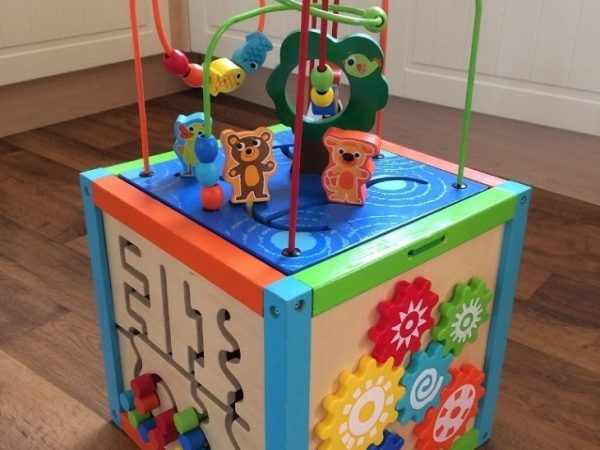05
Feb

As a parent, you are probably aware how important play time is for having a joyful toddler. But are you aware of the effect toys can have on your child’s development? It’s no secret that a child’s brain is like a sponge and takes in all the outside stimuli it’s exposed to on daily basis. This means that even the toys your little ones play with have the power to shape their future development.
Some do that better than others, and that’s why they’re also called educational toys. Their basic purpose is to teach children some important skill – be it on a physical, emotional or intellectual level. Educational toys like children’s wooden activity box and building blocks can help children develop problem solving skills and grasp the basic concepts of math from an early age. The fact that they’re fun to play with makes children’s first contact with math and geometry a positive one, which could easily help them develop a love for them.
Another benefit of educational toys is that they encourage imagination in children. Building blocks or shape-sorter toys give kids fun challenges for which they need to think of inventive ways to solve. At around the age of two, they start to gradually understand the “cause and effect” relationship. Around this time, kids might be drawn to play with stimulating toys like for instance a children’s wooden activity box that features various shapes, wire mazes, opening doors, sound makers, pounders and other moving parts that encourage educational and creative play.
Furthermore, the so-called “see and say” games can help your child develop basic literacy skills and noun recognition. These toys present a visual representation of what the child is hearing and vice versa. Hearing “dog” followed by the picture of a dog lighting up will teach the child to associate the word with the image.
Over time, when kids turn three years, you can introduce them to more complex toys, like for instance puzzles and magnetic sets which help stimulate and boost visual memory. Around that age, you can also try to teach your child about colours and practice counting with the help of building blocks or cubes that come in various colours and have numbers on them. Incorporating learning with a play is also a great way to reduce the anxiety children face before they start school, so please do not hesitate to do it!